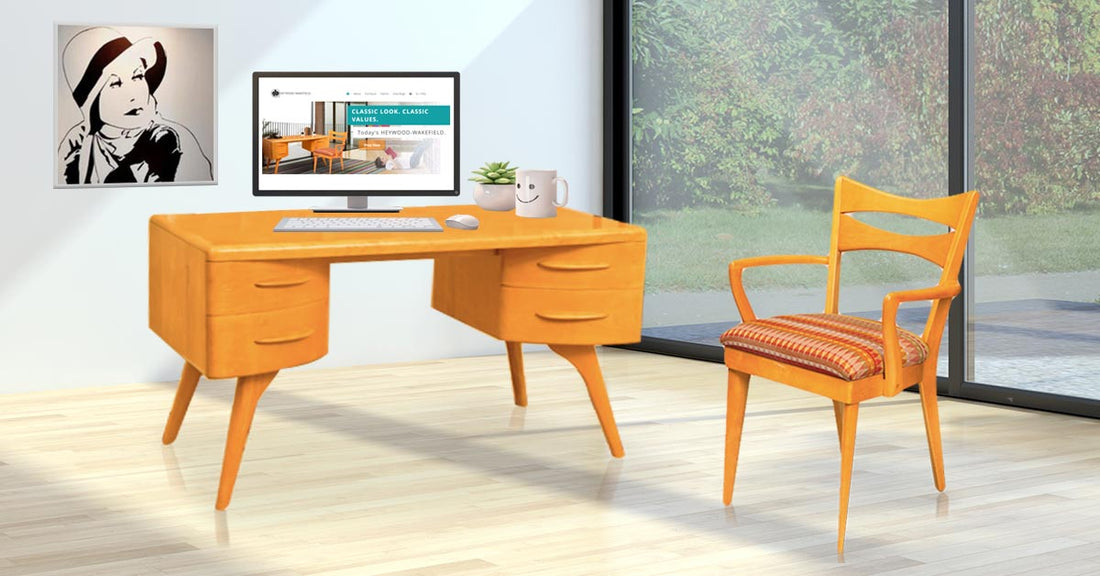
15 Simple Tips for Designing a Home Office
Share
These tips for designing a home office will help you put together an at-home work space where you can feel comfortable but professional. Both are important to staying productive in an environment where it's particularly easy to get distracted and you don't necessarily have any accountability. It's also important that you create a home office that's separate from your other living spaces. This helps you maintain boundaries that promote a healthy work-life balance, and it also helps to keep work-related stress from encroaching on your family relationships, ability to unwind, and even your sleep. Use these tips for designing a home office as guidance, but don't forget to put your personal stamp on the place. Finding ways to make the room your own is another key to creating a work space where you feel poised to conquer the world. Of course, you also don't want the room feeling like an impersonal cubicle. This all holds true whether you're working full time from home—either for your entrepreneurial self or as a telecommuter—or part time, or even just to play the occasional catch up.
How to Arrange a Productive, Happy Home Office
- Give thought to the type of work you'll be doing, your work style, your work flow, and other details of your activity so you can set everything up to accommodate your needs and preferences. Tailor the space to you, rather than going on autopilot and just doing things the ways you're used to seeing them.
- Let in as much natural light as possible. It really helps you feel connected to the world and less like you're working.
- Bring in nature in other ways besides through windows. Place a potted plant or two in your home office. Incorporate earth tones. Hang some pictures of natural scenery.
- Opt for natural wood furniture, too. Consider Heywood-Wakefield's beautiful mid-century modern Home Office Desk, made from solid Northern Yellow Birch and featuring easily accessible, smoothly gliding drawers and a small footprint.
- Create a convenient designated space for home office tech items like your printer, scanner, and old-fashioned stuff like a land line and fax machine, if you still use them.
- Pick up a cord guard or cord snake to neatly contain all those wires, or just use twist ties, zip ties, or something similar.
- Heywood-Wakefield's Corner Bookcase is another way to incorporate natural wood, and a practical way to add book storage capacity while minimizing how much wall space is taken up.
- Get desk organizers for office supplies, bins, paper trays, a filing cabinet, or other tools to help keep clutter—a serious impediment to focus and productivity—to a minimum.
- Invest in a high-quality, comfortable, ergonomically designed office chair that provides adequate support to your back and arms, including as you operate the computer.
- Use frosted light bulbs in your desk lamp or other nearby light sources. They reduce glare and eyestrain and fatigue while you're working.
- Speaking of glare, make sure your computer monitor or laptop screen is positioned in a way that prevents glare, as this too will wear your eyes and mind out faster.
- Small but spacious closing storage units like Heywood-Wakefield's Cabinet Bookcase or Tambour Utility Case are perfect for preventing the cramped-feeling atmosphere that results from too much visible clutter.
- Don't put a television in your home office. The computer provides enough potential distraction; you don't need more to contend with.
- If you have the square footage, set up different “work stations” for different parts of the job. For example, this could mean a computer area, a reading area, and a brainstorming area. This can help you feel more engaged and even train you to be more productive at particular tasks.
- One of the most important tips for designing a home office that's not contained in its own room is to delineate the space, separating it from the rest of your home. A divider wall or screen is helpful in many setups. This helps maintain the individual space and cuts down on distractions and interruptions.
